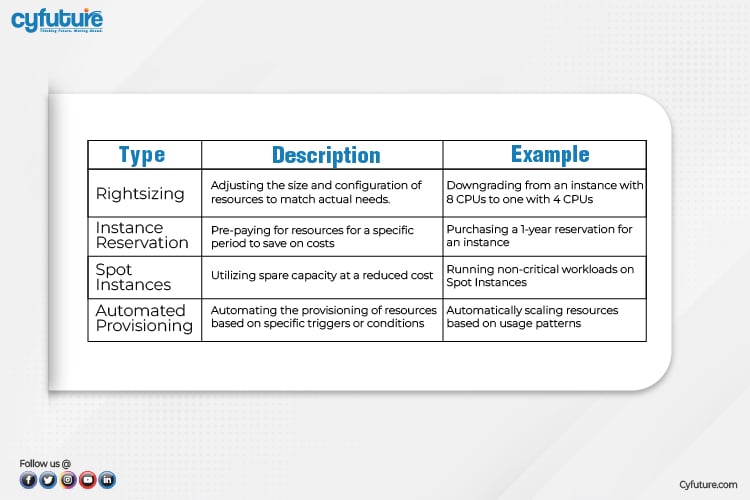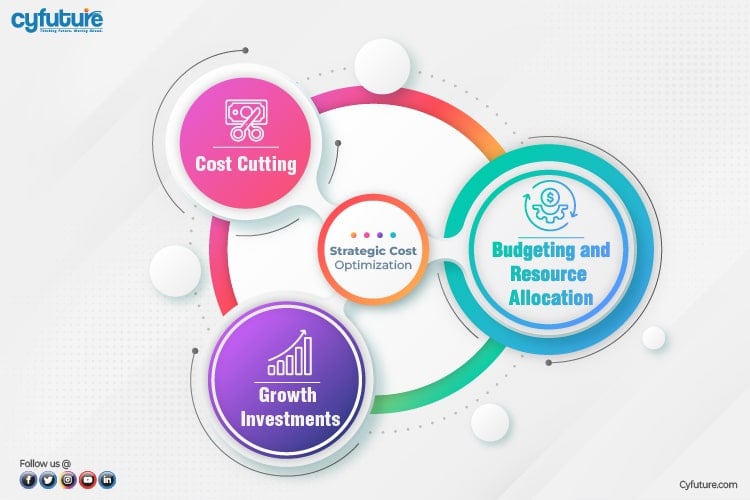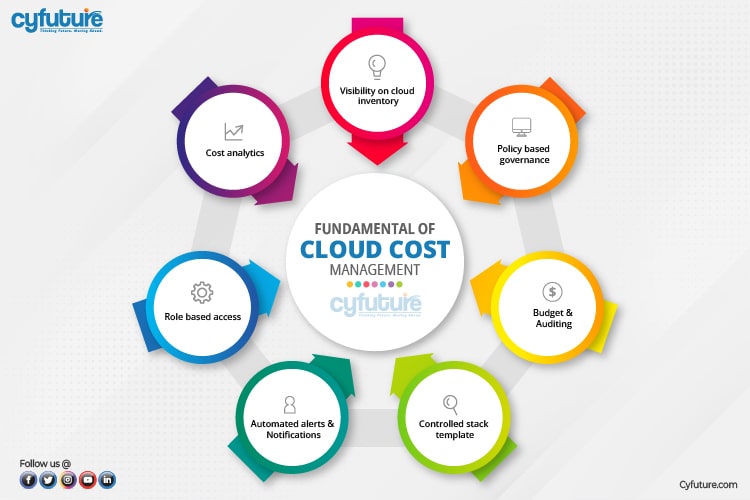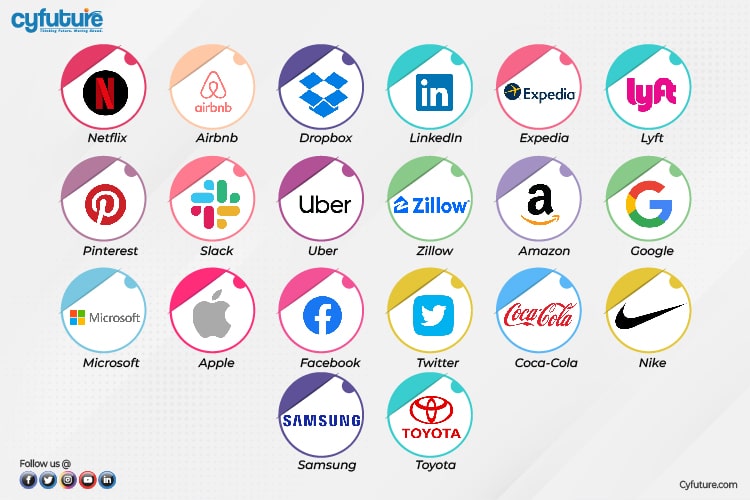Toggle navigation

Recent years have seen a meteoric rise in the number of enterprises using cloud computing. Yet, there is a monetary cost associated with this ease of use. Organizations can waste money if they don’t make the most of the cloud services they pay for. Saving money in the cloud is where cost optimization comes in.
Optimization of cloud costs is cutting costs where they aren’t absolutely necessary without compromising functionality. It is crucial to manage cloud services utilization to avoid financial strain, as the average firm wastes up to 35% of its cloud investment. According to a Flexera poll, 53% of organizations consider cloud cost optimization to be a major priority, while over 93% of firms are worried about cloud prices.
Optimizing cloud costs not only has monetary advantages but also has the potential to enhance the lives of both employees and consumers. Businesses may boost productivity and customer happiness by maximizing their use of the cloud to increase application performance, boost uptime, and decrease downtime.
In this article, we’ll go into cloud cost optimization, discussing what it is, why it matters, and how it affects people’s daily lives. Read on if you want to learn how to get the most out of the cloud while cutting costs.
Having established what cloud cost optimization is, we can move on to exploring its subcategories and best practices.
Companies can implement a variety of cloud cost optimization tactics to help them save money. Just to recap quickly:

– Rightsizing: Rightsizing is a technique for optimizing cloud computing resources (such as instances and storage) to meet current demands. By removing underutilized or surplus cloud resources, firms can save money through rightsizing. Rightsizing can save cloud expenditures by as much as 50%, according to research from ParkMyCloud.
– Instance Reservation: Prepaying for cloud resources for a set length of time (usually 1–3 years) at a discounted rate is possible through a service called “instance reservation,” which is offered by several cloud service providers. This tactic is helpful for organizations that have stable workloads and can properly predict their cloud consumption. When employing instance reservations, you can cut cloud prices by up to 75%, according to Amazon.
– Spot Instances: Cloud companies also provide Spot Instances, which employ spare cloud capacity at a lower cost. Use Spot Instances when your workload is neither time-sensitive nor mission-critical and can tolerate interruptions. By deploying Spot Instances, businesses can save up to 90% on cloud costs.
– Automated Provisioning: Automating the provisioning of cloud resources can help businesses optimize their cloud utilization by dynamically scaling resources depending on usage trends. This method eliminates the need for manual intervention and guarantees that resources are only used when needed, minimizing cloud expenses.

By adopting these types of cloud cost optimization tactics and best practices, businesses may effectively cut their cloud expenses while preserving performance and quality.
– Monitor Usage: Frequently monitoring cloud usage and expenses is vital to detecting areas of overspending. Cloud service providers offer cost analysis tools that can help firms analyze their cloud spending and identify cost-saving options.
– Utilize Cost Analysis Tools: Cloud providers offer several cost analysis tools that firms can use to uncover areas of overspending. These technologies can provide insights into consumer trends, help detect idle resources, and make recommendations for cost savings.
– Prioritize Workloads: Companies should prioritize key workloads that require high performance and ensure that they have appropriate resources. Prioritizing workloads might help firms avoid overpaying for resources that are not required.
– Employ Automation: Automating the provisioning of cloud resources can boost efficiency and eliminate manual involvement. By automating resource allocation based on consumption patterns, businesses may ensure that resources are only used when needed, minimizing cloud expenses.
– Adopt Multi-Cloud: Using various cloud service providers can help businesses maximize their cloud usage by choosing providers based on cost, performance, and availability. Multi-cloud methods can assist firms to avoid vendor lock-in and guarantee that they are employing the most cost-effective cloud services.
Cloud cost management is the practice of managing and optimizing the costs associated with cloud computing services. It is an essential aspect of cloud computing, as the benefits of cloud computing can quickly be negated by unexpected or uncontrolled expenses. Here are some fundamentals of cloud cost management:

– Visibility on cloud inventory: It’s important to have complete visibility into your cloud infrastructure and assets to manage costs effectively. This includes knowing which services are being used, who is using them, and how much they are costing.
– Cost analytics: Cost analytics involves analyzing your cloud costs over time to identify trends, patterns, and areas for optimization. This enables you to make informed decisions about your cloud spending and allocate resources more effectively.
– Role-based access: Implementing role-based access control helps ensure that only authorized personnel can access and make changes to your cloud resources. This helps prevent accidental or unauthorized changes that can lead to increased costs.
– Automated alerts and notifications: Setting up automated alerts and notifications allows you to receive real-time alerts when your cloud usage or costs exceed a certain threshold. This enables you to take proactive steps to address potential cost overruns before they become a problem.
– Controlled stack template: Using controlled stack templates can help you ensure that all of your cloud resources are provisioned consistently and adhere to best practices. This reduces the risk of mistakes that can lead to unexpected expenses.
– Budget and auditing: Establishing a cloud budget and regularly auditing your cloud usage and costs can help you identify areas for optimization and prevent unexpected expenses.
– Policy-based governance: Implementing policy-based governance allows you to enforce rules and guidelines around cloud usage and spending. This ensures that all cloud resources are being used in a way that aligns with your business goals and objectives.
Cloud cost optimization gives different benefits to firms who use it. Let’s explore some of the perks in greater detail:
Decreased Costs:
The fundamental benefit of cloud cost optimization is expense savings. By adopting cloud cost optimization tactics and best practices, firms can lower their cloud expenses dramatically. According to research by Flexera, 93% of organizations employing cloud services have reported optimizing their cloud expenditures, resulting in an average savings of 20% on their cloud expenses.
Better Performance:
Cloud cost optimization can also increase performance by ensuring that resources are sufficiently provided to meet workload demands. By prioritizing key workloads and distributing resources based on consumption patterns, businesses can ensure that their cloud resources are used effectively, resulting in enhanced application performance and reduced downtime.
Improved Scalability:
Cloud cost optimization also enables firms to scale their cloud resources effectively. By using automated provisioning and rightsizing solutions, businesses can ensure that their cloud resources are only used when needed and adapt resource distribution depending on consumption trends. This technique enables firms to increase their cloud resources fast and efficiently to suit changing business needs.
Cloud cost optimization offers several benefits to enterprises, including cost reductions, greater performance, and increased scalability. By adopting cloud cost optimization tactics and best practices, businesses may optimise their cloud usage effectively and create a competitive advantage in today’s digital economy.

Cloud cost optimization can have a huge impact on people’s daily life, both at work and in their personal lives. Here are some of the ways in which cloud cost optimization can make a difference:
Lower Bills:
Cloud cost optimization can result in cheaper cloud costs for enterprises, which can convert into lower prices for customers. By minimizing cloud expenses, businesses may provide their products and services at more competitive prices, passing on the cost savings to their customers. For example, research by the Boston Consulting Group indicated that cloud adoption can lower expenses for small and medium-sized firms (SMEs) by up to 50%, enabling them to offer more cheap products and services.
Improved Savings:
Cloud cost optimization can also enhance savings for people by cutting cloud expenses. When more firms implement cloud cost optimization tactics, cloud service providers may cut their pricing to remain competitive. This trend can result in lower costs for cloud services, allowing individuals to save more money on cloud-based products and services.
More Money to Spend on Leisure:
Cloud cost optimization can also free up more money for consumers to spend on leisure activities. By minimizing cloud fees, individuals can have more spare income to spend on hobbies, travel, and other leisure activities. This can result in a higher quality of life and improved happiness.
Cloud cost optimization can have a huge impact on people’s daily life by cutting costs, increasing savings, and freeing up more money for leisure activities. As more organizations implement cloud cost optimization measures, individuals may expect to see decreased pricing for cloud-based products and services, leading to a more economical and joyful lifestyle.
Cloud cost optimization has become more crucial for enterprises, and several firms have successfully implemented ways to optimize their cloud utilization. Following are some real-life examples of cloud cost optimization:
Netflix: Netflix is one of the major users of Amazon Web Services (AWS) cloud resources, and the corporation has deployed many cloud cost optimization measures. For example, Netflix employs auto-scaling to modify the number of servers based on demand, letting the company save money by only employing the resources it needs. Also, the organization uses Spot Instances, which are AWS cloud resources accessible at a cheaper price when demand is low. This strategy helps Netflix to lower its cloud expenses dramatically while keeping the requisite level of performance.
Unilever: Unilever, a worldwide consumer goods corporation, has established a cloud cost optimization approach that focuses on managing cloud utilization across several departments. The organization employs a centralized cloud management platform that enables it to monitor and control cloud usage effectively. Moreover, Unilever uses auto-scaling and resource rightsizing to ensure that resources are used efficiently and cost-effectively.
Dow Jones: Dow Jones, a multinational media corporation, has established a cloud cost optimization strategy that entails assessing and optimizing cloud usage across several business divisions. The organization employs a cloud management tool to monitor and control cloud consumption, enabling it to find chances for cost minimization. Additionally, Dow Jones employs automated technologies to discover idle resources and unneeded data, enabling the corporation to minimize cloud expenses dramatically.

These real-life examples of cloud cost optimization highlight the benefits of using cloud cost optimization tactics. By concentrating on optimal cloud utilization, firms can minimize cloud expenses, improve performance, and expand scalability, resulting in considerable cost savings and a competitive advantage in today’s digital economy.
In conclusion, cloud cost optimization is a vital strategy for firms aiming to minimize cloud charges, improve performance, and expand scalability. By maximizing cloud utilization and applying best practices, enterprises can generate considerable cost savings, enabling them to offer more affordable products and services to consumers. Additionally, cloud cost optimization can have a positive impact on individuals’ daily life, by cutting expenses, increasing savings, and freeing up more money for leisure activities. In today’s digital economy, cloud cost optimization is vital for enterprises and individuals alike, giving a pathway to a more efficient, cost-effective, and joyful existence.